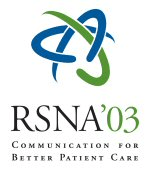Abstract:
HTML
Purpose: To consider design requirements for a CT scanner capable of time-resolved whole body angiography and temporal resolution of 10-20 ms for coronary artery imaging.
Methods and Materials: For coronary imaging present spiral CT scanners rely on rapid gantry motion to achieve angular coverage over a few sequential heartbeats. If the synchronization of the heartbeat and the rotation are unfavorable, the same angular range may be covered in sequential rotations and the temporal aperture must be widened to obtain sufficient angular range. We have considered acquiring data in a manner analogous to the undersampled MR VIPR technique that produces large acceleration factors relative to Cartesian acquisition, especially in applications involving subtraction. In VIPR, projections pass through the center of k-space from equally spaced positions on the surface of a sphere. Our goal in Z-scan CT is to obtain similar k-space data sets. The analysis of k-space coverage is facilitated by our recent generalization of the central slice theorem to the cone beam case. For coronary imaging we have studied the requirements for a scanner with a cone beam x-ray source rapidly moving over the entire SI region of interest as the gantry rotates once per breath hold. A new 2D projection is generated once per ms by a scanned electron beam in the SI direction. This distribution is compatible with a focused scatter rejection grid. For whole body angiography, conventional gantry rotation speeds will provide time-resolved angiograms with large SI coverage and good temporal resolution.
Results: The proposed scheme will reduce heat loading due to the rapid motion of the source. Coronary motion due to temporal aperture width should be reduced but beat to beat variations may contribute to blurring. The system requires 2D detector readout at frame rates of about 1000 fps. For body angiography temporal resolution will reduce bolus-timing uncertainties.
Conclusion: The proposed system could provide advantages over present spiral CT scanners. Further study is required to determine image quality related to undersampling artifacts and dose requirements.
Boutchko PhD, R,
Requirements for Ultra-fast Z-Scan CT. Radiological Society of North America 2003 Scientific Assembly and Annual Meeting, November 30 - December 5, 2003 ,Chicago IL.
http://archive.rsna.org/2003/3107273.html

